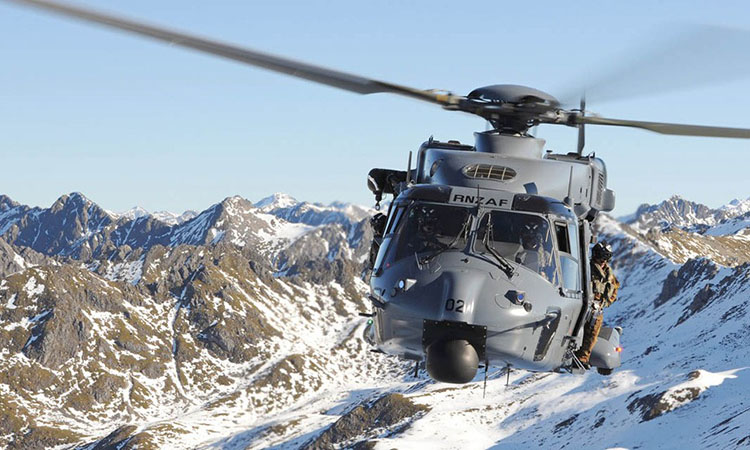The Royal New Zealand Air Force’s fleet of eight NH90s have been flying under restricted conditions since mid-month after an engine failure forced one of the medium utility helicopters to make a precautionary landing.
On April 16, a NH90 with nine people on board had just departed Woodburne Air Force Base, near Blenheim en route back to its base at Ohakea when the crew felt a large vibration followed by a loss of power in the helicopter’s left-hand Rolls-Royce Turbomecca RTM 322-01/9 engine.
The crew safely performed an immediate precautionary landing on a nearby private airstrip.
The problem engine was subsequently removed in situ and shipped to Safran Helicopter Engines at Sydney’s Bankstown Airport for a detailed inspection.
“In light of what has been learned in recent days and the facts yet to be determined, the RNZAF has decided in the interest of safety to limit NH90 flying operations,” read a RNZDF statement following the incident. “The limitation on NH90 operations will prevent flights where an immediate landing will not be possible in the case of an engine-related emergency. For example, over built-up areas, mountainous terrain or over water.”
New Zealand’s Chief of the Air Force, Air Vice-Marshal Tony Davies, said while the helicopters were still able to be used over large parts of the country, and for limited training missions, the Air Force was working with the NH90’s engine manufacturer to determine the cause of the failure and would resume full flying operations as soon as possible.
“By all accounts it was a textbook recovery,” said AVM Davies of the emergency landing.
“The NH90 is a remarkable aircraft, it’s been doing a fantastic job for New Zealand, but we’ve got to take a safe approach to this [engine failure].”













